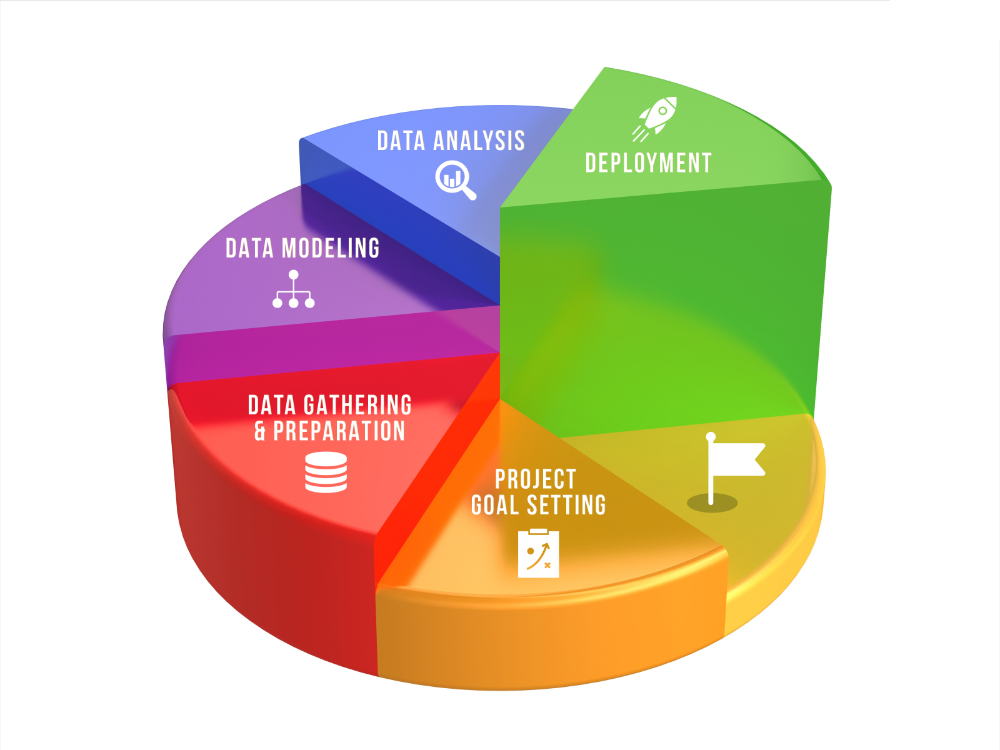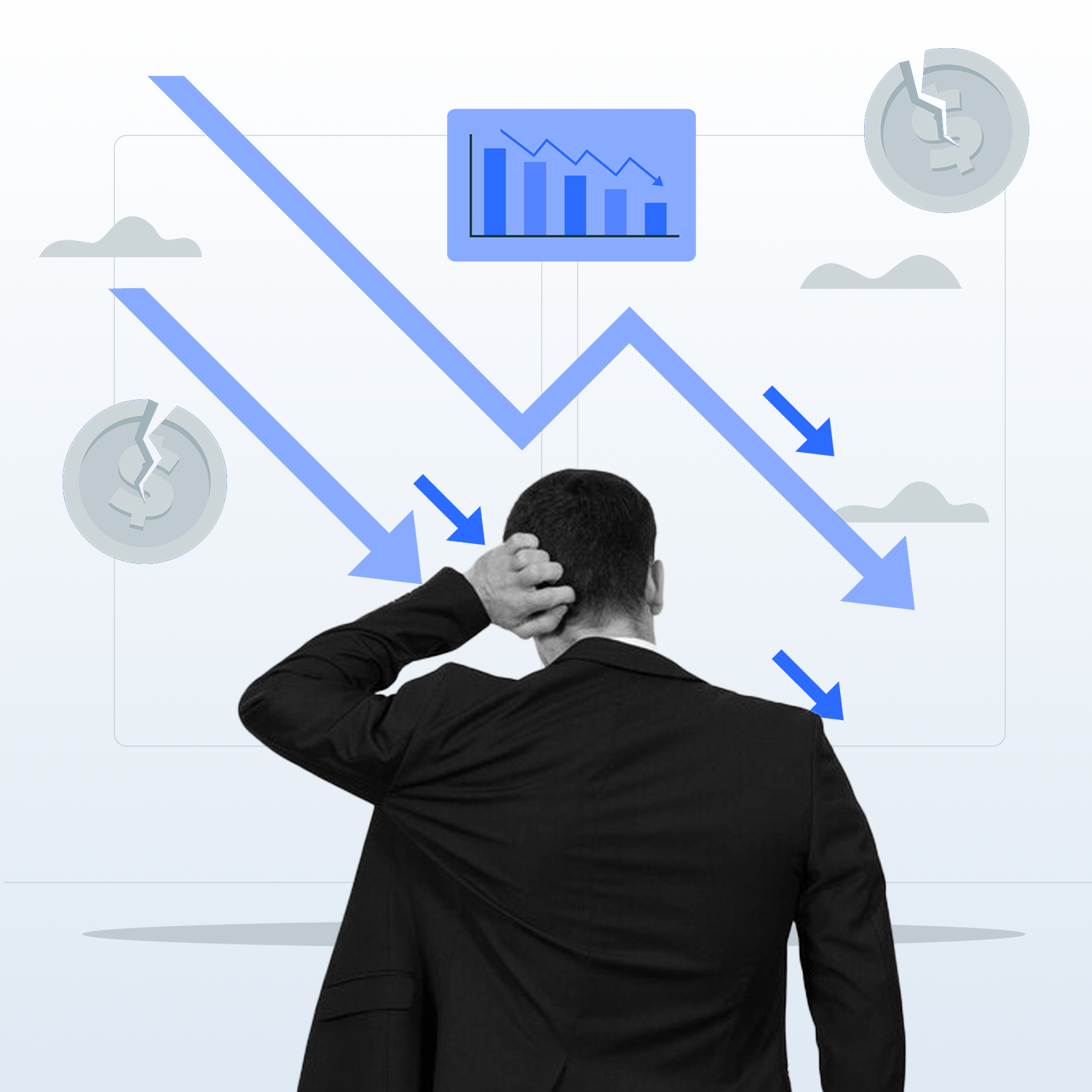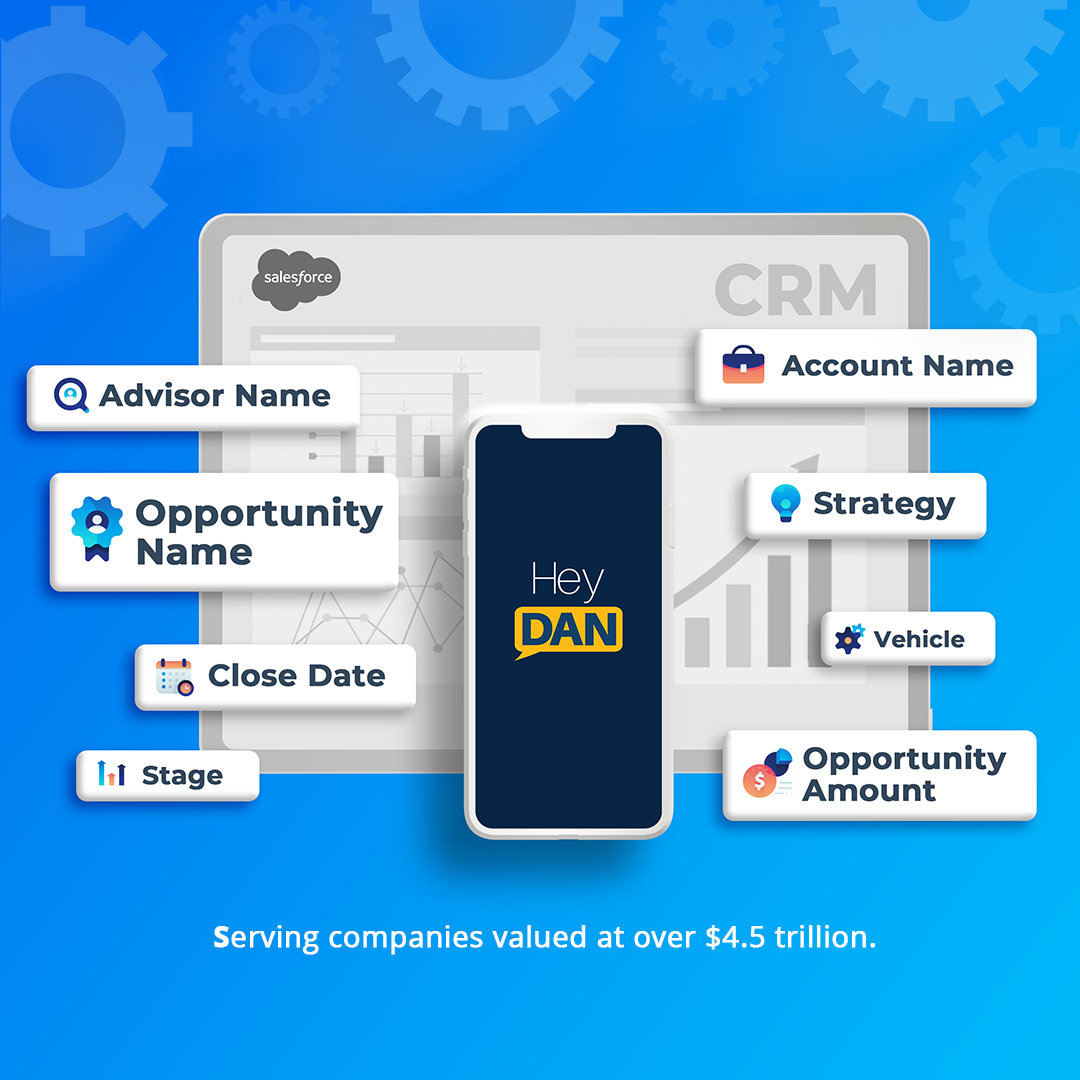Data Mining is a process that requires many steps. While many companies have data, not all of them are usable or necessary for the particular project objective involved. Here’s are the 5 Steps to Data Mining that you should know about:
Project Goal Setting
For anything to succeed, it has to have a plan. Goal setting is the foundation of every successful data mining project. Through aligning on their project objectives and timelines, business and data mining teams can have a smoother working relationship throughout the experience.
Goal setting allows teams to assign roles and make a clear plan to move forward. Expectation management is key to avoiding issues throughout the data mining process.

Data Gathering & Preparation
For every good kind of data, there is a mountain of bad data. From incomplete, fraudulent to out of date, bad data is everywhere. When not cleaned, it can ruin any campaign. The data gathering and preparation stage is all about making sure that the data is usable.
For larger, more established clients, there must be mitigation of security risk. Trust is a necessary element when dealing with sensitive information. Data processing often uses modern database management systems (DBMS) to improve data mining speed. It is also a primary precaution when dealing with data that is confidential to an organization.
Read about our Bad Data Series, what to avoid and how to provide clean data for your CRM
Data Modeling
With the use of mathematical models and various data visualization tools, there are meaningful patterns discovered in the data. Through conceptual representations of how data objects and rules go hand in hand, they form a Database.
A Database can be conceptual, physical, or logical, depending on the Data Model applied. With the right structure, it can help define relational tables, keys, and procedures. For Data Modeling to work, it needs to have quality data, security procedures, consistent semantics, default values, and naming conventions. There are two types of Data Modeling Techniques: Entity-Relationship (E-R) Model & Unified Modeling Language (UML).
Data Analysis
After the modeled data is analyzed, it is then extracted, transformed, and visualized. Data analysis helps bring together useful information to give insights or test hypotheses.
With a combination of business intelligence and analytics models, Data Analysis orders raw data in a way that is relevant to the project goals. Armed with visual representations and insight on previously unrefined data, it is then ready for deployment towards relevant business units.
Deployment
In the last stage of Data Mining, relevant partners test the hypothesis. There are four different types of model deployment: data science tools, programming language, database, and SQL script or predictive model markup language.
Mined data provides a single source of truth that can guide business decisions moving forward.With coordination between data scientists, IT teams, software developments, and business professionals work together to integrate the new models with the existing production system of an organization. Companies such as Hey DAN are experience and well organized in handling professional data mining.

 How AI CRM Entry Boosts Sales Forecast AccuracyMarch 25, 2025 - 12:47 pm
How AI CRM Entry Boosts Sales Forecast AccuracyMarch 25, 2025 - 12:47 pm 5 Reasons Top Sales Teams Are Using Hey DAN for CRM AutomationFebruary 14, 2025 - 11:22 am
5 Reasons Top Sales Teams Are Using Hey DAN for CRM AutomationFebruary 14, 2025 - 11:22 am The Cost of Manual CRM Data EntryJanuary 31, 2025 - 9:18 am
The Cost of Manual CRM Data EntryJanuary 31, 2025 - 9:18 am Why CRM Entry Needs a RevolutionJanuary 25, 2025 - 3:10 am
Why CRM Entry Needs a RevolutionJanuary 25, 2025 - 3:10 am Hey DAN’s Compatibility with Microsoft IntuneJanuary 3, 2025 - 11:01 am
Hey DAN’s Compatibility with Microsoft IntuneJanuary 3, 2025 - 11:01 am
Dangers of Data Mining
/in Articles, Data MiningData mining is a powerful tool that can help companies in a variety of ways. From cutting costs, optimizing processes to improving sales, data mining is a game-changing tool that every company should have on their arsenal. There’s no shortage of benefits that data mining brings to organizations everywhere. But what are the dangers?
While data mining can put anyone at the forefront of every industry, it can quickly go badly for companies that don’t do it properly. From the collection process to the actual implementation, there are various entry points for the dangers of data mining. Let’s dive into each one.
While data mining on its own doesn’t pose any ethical concerns, leaked data and unprotected data can cause data privacy concerns. Through the years, there have countless campaigns on stolen data that have caused an uproar in various parts of the world.
Very personal information like intimate photos, credit scores, or bank account log-in details have been leaked and caused real-life distress to users. People can lose reputations, their life savings, and maybe even their peace of mind in the process.
Ethical Dilemmas
As big data creates a better view of who people are and what they want, it begs the bigger question of whether or not monetizing sensitive data is ethical.
By accessing personal records to exploit people in the name of profit, we can blur the boundaries between what is acceptable or not.
Information such as medical records, location tracking, or even search history, used to manipulate users into buying things that are not clinically proven, they don’t need or cannot afford raises a lot of pertinent questions.
Inaccurate Data
At any given time, there are two main kinds of data available to data miners– bad data and good data. Unfortunately, the internet is rife with the former more than the latter. When companies don’t sift through data properly, they’re prone to using incomplete, duplicated, or outdated data.
Companies can be stuck with a half-baked analysis that won’t add value to their businesses and unnecessarily waste a ton of money in the process.
Overvaluing the Output
While data can help make decisions, it’s also not everything. When it comes to things like management or leadership, the most useful data can sometimes be the unstructured ones.
Not every great decision can be attributed to data, especially when the algorithms behind the process are not yet as refined. As time passes and algorithms get smarter, it may become more reliable.
To get the most of data mining, data miners need to know the difference between the actual business and data. Data gives a picture of a business, but it’s never the whole picture. To get the most out of data mining, it needs to be in collaboration with business units that can serve as a check and balance.
Data miners also have to remember that behind the 1’s and 0’s, there are actual people who will be affected by their recommendations.
Data Warehousing Fundamentals
/in Articles, Data MiningData Warehouses have long been a part of company standard operating procedures. However, as time passes, companies need more complex systems that can handle increasing amounts of data.
The main differentiator between the various stages varies in terms of data accuracy, triggers, and interactions between the operational systems and storage mechanisms. Between industries, there are different levels of sophistication required. They each have varying fundamental warehousing needs that affect workflow and customer experience.
Depending on the size, age, and industry of the company, Data Warehouses will be within one of the four stages or in a point of transition. So, where does your company stand?
4 Stages of Data Warehouses
Stage 1: Offline Database
In their most early stages, many companies have Data Bases. The data is forwarded from the day-to-day operational systems to an external server for storage. Unless extrapolated and manually analyzed, this data sits where it is and does not impact ongoing business functions. Transactions such as loading or processing of data have no effects on an operational standpoint.
Stage 2: Offline Data Warehouse
While not entirely up-to-date, offline Data Warehouses regularly update their content from existing operational systems. By emphasizing reporting-oriented data structures, the organized data meets the particular objectives of the Data Warehouse.
Stage 3: Real-time Data Warehouse
Real-Time Data Warehouses gathers information through operational system events-based triggers. Often, these come in the form of transactions such as airline bookings or bank balances.
Discover AI CRM Automation with Hey DAN’s Voice to CRM Solution
Stage 4: Integrated Data Warehouse
Daily activities to be passed back to the operating system continuously in the Integrated Data Warehouse. Integrated Data Warehouses are the ideal Data Warehouse stage with the data not just readily available but also updated and accurate.
It’s pertinent to understand what stage your company’s Data Warehousing facilities are before you can improve them. The journey to creating the best version of your Data Warehouse takes time to set up and even more to integrate into your company’s workflow.
Companies need to invest time to transition their Data Warehouses to more efficient stages as their organizations become larger and more complex. Often, there needs to be regular training towards different business units to maintain the accuracy of the data.
Data Warehousing is not an overnight process and requires a long term strategy for both integration, adoption, and maintenance. There must be procedures in place to avoid fraudulent, obsolete, and incorrect data.
Companies must also be on high alert for possible security breaches that may affect the trust that customers place on the brand concerning their personal data. As the data compiled becomes increasingly granular, it becomes important to protect it from malicious intent.
Despite its many challenges, developing a good Data Warehouse is still a necessary investment that should be in every company’s roadmap. Having a working Data Warehouse is the first step to creating efficient Data Mining workflows. There’s no doubt that having a good Data Warehouse will be the standard for companies that want to get ahead and stay ahead of the competition.
What is a Data Warehouse?
/in Articles, Data MiningA combination of different types of strategic data aids, Data Warehousing (DWH) is a process that collects and manages data within a system. More often than not, Data Warehouses gather data from multiple sources while acting as a core designed for analysis and generating reports. Data Warehousing helps business leaders make better decisions, faster.
Data Warehouses are not particular products but an entire ecosystem. They allow users to find past and present information in a more organized manner compared to traditional operational databases. A well-designed data warehouse can access information faster and create better reporting processes.
Data Warehouse Data Structures
Data Warehouses take information from various sources and acts as a repository. There are three types of data in Data Warehouses: structured, semi-structured, and unstructured.
Before users can make use of the data through Business Intelligence tools, it first has to be processed through Data Mining. Data Mining looks for meaningful patterns from the Data Warehouse to create a holistic view of the business and give better recommendations to relevant business units.
Types of Data Warehouses
There are three main types of Data Warehouses: Enterprise Data Warehouse, Operational Data Store, and Data Mart.
The Enterprise Data Warehouse (EDW) is a business’ central data warehouse that classifies data while giving access to the right users. While Operational Data Stores (ODS) are real-time data often used for routine activities, and Data Mart is Data Warehouses made for specific business units.
What are Data Warehouses used for?
Data Warehouses are used by businesses to sort through data from various sources and organize them by context to become usable. Data Miners use them as a preliminary step to find a meaningful pattern.
Many industries regularly use Data Warehousing to improve their operations and data mining practices. From retail chains looking to track items and manage inventory to airlines that need to keep track of repeat customers and route profits, there are infinite ways that Data Warehousing aids businesses from all over the world.
The Struggles of Implementing Data Warehouses
Data Warehousing is not without issues. Data Mining becomes increasingly common, so are the restrictions that come with the amount of data that companies are allowed to store.
The beginning stages of building a Data Warehouse can also be an overwhelming process for companies that did have a good data management foundation. It can be time-consuming and require additional training to adjust people to their usage.
Many large companies also struggle with organizing a large amount of complex data that may not find in the existing cloud storage solutions and may need physical storage that entails additional maintenance, hiring of personnel, and use of space.
Conclusion
While Data Warehousing may seem like a resource-intensive process, it’s an investment that will be useful for years to come. It can help users efficiently access critical data, and integrate systems that would otherwise be a pain to consolidate.
Overall, Data Warehousing should be standard practice and creates a good foundation for Data Mining.
Supervised, Unsupervised and Semi-Supervised Data Learning Models
/in News4 Key Stages of Lead Generation
/in Articles, CRM Adoption, Sales PerformanceLeads are the potential customers that each business wants to start a relationship with. From online to offline campaigns, lead generation campaigns find prospective customers, segment them, and then nurture them into a purchase.
So, how does a customer become a stranger into an advocate for your brand? There are four keys stages that they have to go through:
Attract
Customers don’t just show up in your store. They need to know who you are and how you can help them with their problems. The first step is building the right channels that represent your products and services. It should show information that any customer will need at every stage of the buyer’s journey.
The next challenge is to make sure that the right people know about you. Using a mix of online and offline campaigns, marketing teams start the process of separating strangers from potential customers. One of the main goals is to build trust with your brand through engaging and relevant content. Customers who take the time to view your channels want to know more before making any commitments.
Convert
Once companies have their potential customer’s attention, it’s time to engage them. To continue the relationship after you first meet, companies need to get their contact details. In this lead generation stage, a call-to-action asks for their personal information in exchange for access to a benefit such as freebies, special promo prices, or exclusive sales.
Often going from the conversion to the closing stage is not instantaneous, and many customers need time before they move into the next level of their buyer’s journey. This time should is filled with educating the customers on just what the products and services are, but how they are relevant to their individual needs.
Close
Once a customer believes that you might be the right answer to their problems and give you their personal information, then companies have now captured them as leads. Unfortunately, not all leads are the same. Some leads are better than others, but great leads are nothing without proper relationship management.
A great CRM system will tell you exactly which leads to prioritize and where they are in their journey. CRM systems help companies keep track of their movement along the sales pipeline.
Delight
Once a lead has converted into a sale, the relationship is far from over. Companies that pay attention to their customer’s after-sales journey make them more likely to be repeat customers.
Simple actions such as engaging them again through smart content, asking them for feedback on how to improve your offers, or even cross-selling other products can improve the customer’s over-all lifecycle value.
Leads don’t just happen; they come into fruition through the various joint efforts of marketing and sales. They’re also continuously moving across the sales pipeline and always on the lookout for better offers.
Luckily, companies don’t have to worry about the lead generation process by themselves. Sales performance management can be improved partnered with companies like Hey DAN that does CRM Data Entry with their voice to crm solution. Your sales team may now focus more on nurturing their leads, and closing sales.
5 Data Mining Steps
/in Articles, Data MiningData Mining is a process that requires many steps. While many companies have data, not all of them are usable or necessary for the particular project objective involved. Here’s are the 5 Steps to Data Mining that you should know about:
Project Goal Setting
For anything to succeed, it has to have a plan. Goal setting is the foundation of every successful data mining project. Through aligning on their project objectives and timelines, business and data mining teams can have a smoother working relationship throughout the experience.
Goal setting allows teams to assign roles and make a clear plan to move forward. Expectation management is key to avoiding issues throughout the data mining process.
Data Gathering & Preparation
For every good kind of data, there is a mountain of bad data. From incomplete, fraudulent to out of date, bad data is everywhere. When not cleaned, it can ruin any campaign. The data gathering and preparation stage is all about making sure that the data is usable.
For larger, more established clients, there must be mitigation of security risk. Trust is a necessary element when dealing with sensitive information. Data processing often uses modern database management systems (DBMS) to improve data mining speed. It is also a primary precaution when dealing with data that is confidential to an organization.
Read about our Bad Data Series, what to avoid and how to provide clean data for your CRM
Data Modeling
With the use of mathematical models and various data visualization tools, there are meaningful patterns discovered in the data. Through conceptual representations of how data objects and rules go hand in hand, they form a Database.
A Database can be conceptual, physical, or logical, depending on the Data Model applied. With the right structure, it can help define relational tables, keys, and procedures. For Data Modeling to work, it needs to have quality data, security procedures, consistent semantics, default values, and naming conventions. There are two types of Data Modeling Techniques: Entity-Relationship (E-R) Model & Unified Modeling Language (UML).
Data Analysis
After the modeled data is analyzed, it is then extracted, transformed, and visualized. Data analysis helps bring together useful information to give insights or test hypotheses.
With a combination of business intelligence and analytics models, Data Analysis orders raw data in a way that is relevant to the project goals. Armed with visual representations and insight on previously unrefined data, it is then ready for deployment towards relevant business units.
Deployment
In the last stage of Data Mining, relevant partners test the hypothesis. There are four different types of model deployment: data science tools, programming language, database, and SQL script or predictive model markup language.
Mined data provides a single source of truth that can guide business decisions moving forward.With coordination between data scientists, IT teams, software developments, and business professionals work together to integrate the new models with the existing production system of an organization. Companies such as Hey DAN are experience and well organized in handling professional data mining.
3 Main Types of CRM Leads
/in Articles, CRM Adoption, Voice to CRMLeads are the lifeblood of a great CRM system. For most CRM systems, a CRM lead is a kind of customer who could already be in your sales pipeline but has not completed their lifecycle yet.
Unfortunately, not all leads are made equal. Focusing on the wrong ones can be detrimental to both your company’s budget and your teams’ time. So what are the types of leads in a CRM system?
3 Main Types of Leads
Information Qualified Lead (IQL) – Cold Lead
In the early stages of interacting with your customers, companies are often given contact information in exchange for freebies, promotional offers, or relevant information. With a stream of nurturing activities from marketing and sales teams, IQLs need to learn more about your company, your offerings, and how it answers to their particular needs.
IQLs can be considered cold leads. More often than not, it’s good to keep tabs and regularly maintain your relationship with them. However, they shouldn’t be a priority for your team’s follow-up strategies.
Marketing Qualified Lead (MQL) – Warm Lead
Marketing Qualified Leads are a kind of lead that is likely to convert into sales. While they’re not likely to buy right now, they are likely to respond better to being nurtured. MQLs are also called warm leads. After a combination of time and effort, they can become paying customers.
Different companies will have different ways of qualifying an MQL. It is often a combination of the prospective customers’ positive interactions with your marketing campaigns, their existing history, or how well they fit into your ideal customer persona.
Sales Qualified Lead (SQL) – Hot Lead
A Sales Qualified Leads is also what you call a hot lead. The main difference between MQL and SQL is their readiness to commit to purchasing your product or service. After being qualified by marketing, prospective customers are nurtured by sales teams to avail of your product or service.
Through careful vetting, sales qualified leads to feel that their needs are understood. The marketing department’s budgets are also better spent, and the sales teams maximize the effort they are putting in.
Nurturing Every Kind of Lead
The key to a great CRM system is knowing exactly where each lead is in their buyer’s journey. As a rule of thumb, it’s always best to prioritize the hottest leads first before going after the colder ones.
It’s not enough to have a lot of leads. You also have to find good quality leads. With limited time but a mountain of opportunity, sales teams need help to find the best prospective customers at the right stage and the right time.
One way to make sure that each lead is taken care of until they are ready to be closed by sales is by working with Voice to CRM enablement companies such as Hey DAN.
With their data management system, consulting services, and opportunity spotting technology, they can help you nurture each kind of lead at every stage of the sales pipeline.
Inbound versus Outbound
/in Articles, Sales PerformanceWith the rise of the internet, the way companies reach their ideal customers is changing practically overnight. Before companies can even begin to think about sales, they first need to generate leads.
Why is lead generation important?
Lead generation is useful because it allows companies to segment and prioritizes customers that need their products and services the most. There might be a million possible customers, but not all of them will have the need and capacity to purchase right away.
Sales teams need to know which customers are more likely to convert, so they can focus their efforts on giving them the information they need. Being a salesperson requires juggling multiple tasks such as nurturing relationships, closing deals, and admin work. These are all aside from searching for prospective customers. Lead generation creates the demand for the present and future offers of the business.
What are the two kinds of lead generation?
There are two main types of lead generation – inbound and outbound. Inbound and outbound lead generation are differentiated by who starts the relationship.
When the customer leaves their personal information in exchange for freebies, exclusive sales, or special rates, this is called inbound lead generation. Through campaigns such as SEO, informative blogs, how-to videos, and content marketing, companies built trust with their prospective customers. When customers see your brand throughout their buyer’s journey, they are more likely to trust the products and services that you offer. Content created for inbound lead generation is more generic to the industry and relevant for extended periods.
On the other hand, outbound lead generation is sharing your company’s products and services towards customers who fit the ideal buyer profile. Unlike with inbound, outbound campaigns take the first step. Through the use of paid campaigns and media such as display advertising, outbound strategies are often more expensive to execute than inbound. The intent of outbound lead generation is more likely towards the latter half of the sales pipeline. Content created for inbound lead generation is more likely to be about specific benefits of the company’s current offers.
Inbound and outbound lead generation have different timelines, targets, and ways of executing. However, they still have the same goal – to find and convert quality customers.
How do you know what strategy is right for your company?
As with many things, there is no clear answer to what kind of strategy is right for everyone. Companies will be in various stages. Each will have different customers at different lifecycle stages, and products that will determine the right way to approach individual customers. However, having a mix of both inbound and outbound marketing throughout the sales pipeline is recommended.
If you’re not sure the best way to go about it, it’s good to work with people who do. Both strategies, particularly outbound, can become expensive very quickly when done the wrong way. Voice to CRM Solutions like Hey DAN can help you to fine-tune and maximize your inbound and outbound lead generation and be able to get accurate data into your sales team’s CRM.
3 Types of Data Mining Uses
/in Articles, Data MiningMany companies only have a limited amount of resources. They do not always have the means to monitor every single one at the same standard. It can open a myriad of potential issues like delays and errors that stem from human judgment.
With Data Mining, organizations can delegate many aspects of the decision-making of routine without compromising results. Through various algorithms, models can not only collect data, but they can also analyze them.
From critical decisions to automated processes, Data Mining streamlines both issues and opportunities to increase an organization’s overall productivity.
Read about our Bad CRM Series and understand the advantages of having accurate and clean CRM Data
3 Types of Data Mining Uses
There are many advantages and uses for Data Mining for every kind of business. Here are a few ways Data Mining can be used to help yours:
Forecasting
Every success starts with a plan. In a hyper-competitive landscape, data-driven planning means all the difference between falling behind or staying on top. It can provide teams from all ranks with the necessary information that can keep them ahead.
Demand forecasting models take note of what has done right – past trends and current conditions. Then, Data Mining can be used to predict what to do better. From pricing strategies to inventory management, it saves a lot of wastage and maximizes the use of resources.
Data mining helps identify opportunities to improve processes, procedures, and experiences.
Cost Reduction
With better forecasting, companies save valuable resources. Data mining not only helps make better decisions but get the best results with the least cost. It keeps companies from investing in the wrong things, hiring people at the wrong time, or selling to customers who can’t afford their offers.
Whether it’s to prevent spoilage from over-ordering ingredients for a restaurant chain, retail stores running out of stocks, Data Mining can help reduce cost and increase sales.
Customer Insights
As consumers spend an increasing amount of time, so does the data that comes with their usage. With every virtual touchpoint, companies have access to a treasure trove of data on former or prospective customers.
However, having a ton of data is not always useful when they are not usable. There are more kinds of bad data than there are good. Data Mining involves taking a needle out of a haystack and finding the right data needed to make good decisions.
Data Mining helps create a holistic view of customers by using models to create a more accurate user persona. It is a primary component to personalize each person’s experience with the brand.
With increasingly short attention spans and a global marketplace to compete with, knowing a customer is a key to winning their attention and share of wallet. From serving timely ads to creating relevant products and services, data mining is a secret recipe for every great company’s success.
It’s no secret that we’ve only begun to scratch the surface on what Data Mining can really do, but there’s one thing that we do know – it’s here to stay.
What is Data Mining
/in Articles, Data MiningData mining is the process by which companies learn more about their customers through actionable patterns from their analyzing their data. Most data science fields deal with understanding historical data; data mining deals with more predictive analytics that tries to predict future ones.
Data Mining Uses
While data mining might seem intimidating to a lot of users, it’s present in a lot of features that we already interact with and are necessary to run our business systems today.
Companies use data mining in their marketing efforts; banks use it for their credit scoring and fraud detection. Many medical professionals and scientists use it for health predictions. Customers experience it through e-commerce recommendations, email spam detection, and search engine rankings.
When used ethically, data mining is a tool that can make sure that businesses stay relevant now and in the future.
Data Mining Benefits
Customers will also get a better experience with being served content that is relevant to them and their intended activity. Customers need to feel that their customer experience is tailor-fit to their needs, whether it’s through personalized ads, useful recommendations, and products that solve real problems.
From companies to customers, data mining is integral to improving experiences for everyone.
Issues with Data Mining
Data mining is a gold mine, but only when you know where to look. Unfortunately, not all data are useful data; bad data, in the form of incorrect, incomplete, or fraudulent data, is more common than most people think.
Companies need to integrate data management systems that make sure that the information supplied is up-to-date, accurate, and complete. It’s also possible to over-fit, wherein the prediction may be correct for the sample that the model derived from but not the actual population. Variables are tricky because having too little or too much can skew the levels of accuracy.
Having a lot of data can also unlock a variety of issues like data privacy and theft concerns. Companies need to be careful with the protection and storage of their customer data from attackers with malicious intent such as spam, phishing, and identity theft.
Maximizing Data Mining
For data mining to work, it should be part of a holistic strategy that knows how to use it well. After enriching artificial intelligence techniques and complement machine learning models, companies should use the predictions to improve their processes, products, and services.
Data mining is a powerful tool that should be in every company’s arsenal. Customers are increasingly demanding more from brands, and companies need to respond accordingly to stay viable. While it may seem costly and overwhelming at first, investing in it can mean the difference between your company still being profitable a few years down the line.